Alphabet Recognition Cursive Alphabet Worksheets for Ages 4-9
7 filtered results
-
From - To
Enhance your child's reading and writing with our Alphabet Recognition Cursive Alphabet Worksheets for ages 4-9. These engaging, printable worksheets from Kids Academy are specifically designed to help young learners master both uppercase and lowercase cursive letters. Each activity combines fun and educational exercises to improve letter recognition, handwriting skills, and fine motor development. Perfect for home or classroom use, these worksheets provide a solid foundation for fluent cursive writing. Download today to give your child a head start on their literacy journey with enjoyable, high-quality learning tools. Discover the joy of learning cursive with Kids Academy!
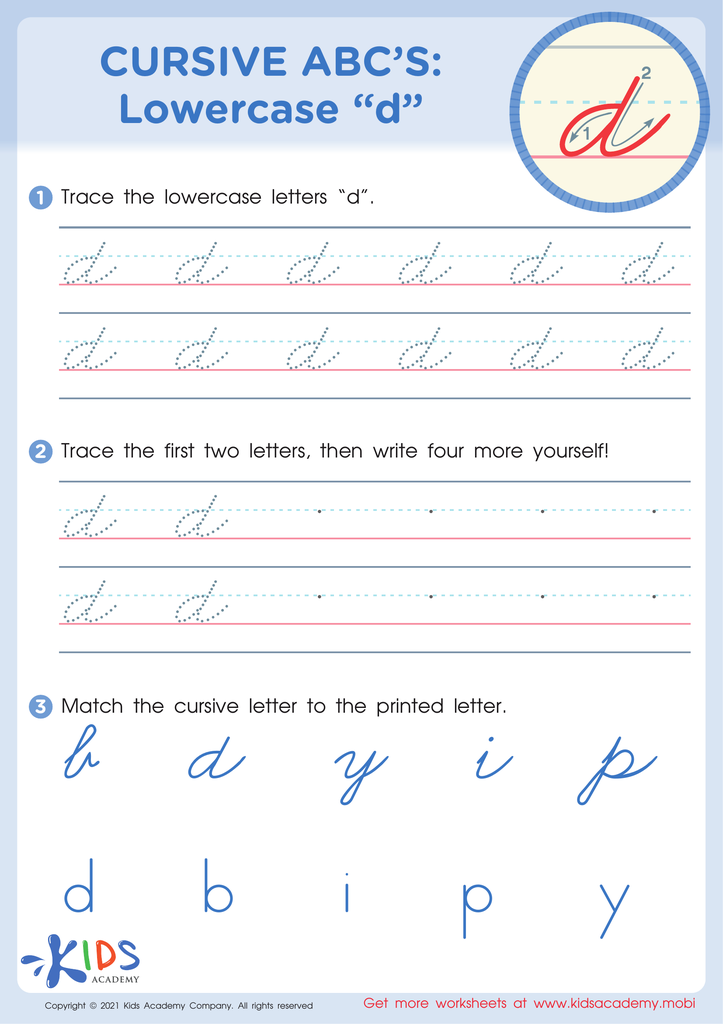

Cursive ABCs: Lowercase d
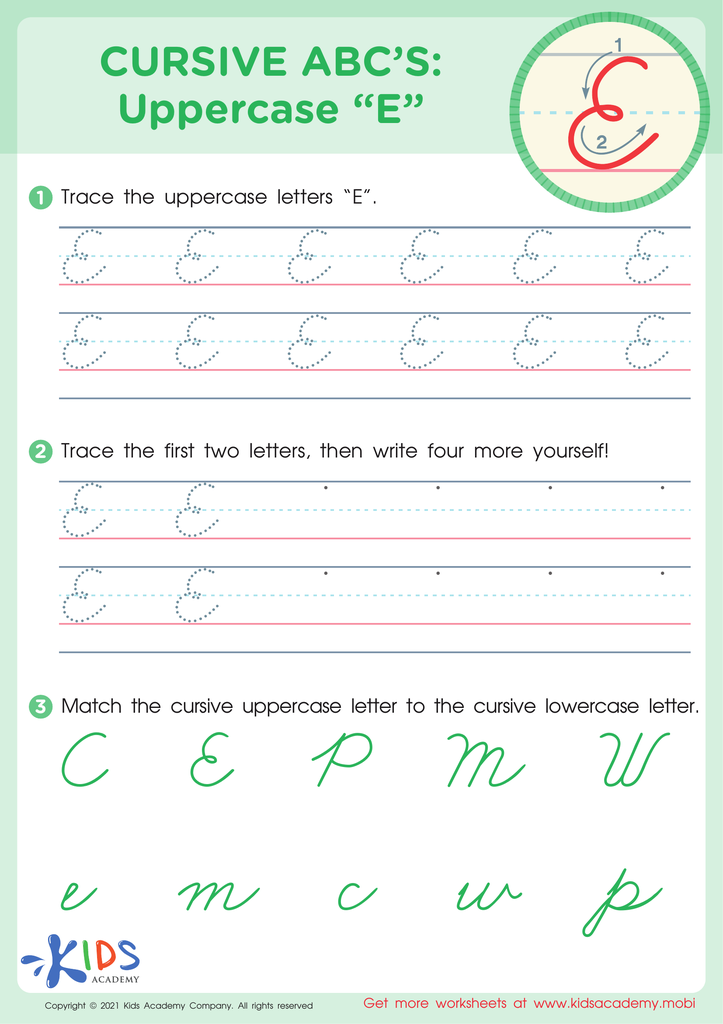

Cursive ABCs: Uppercase E
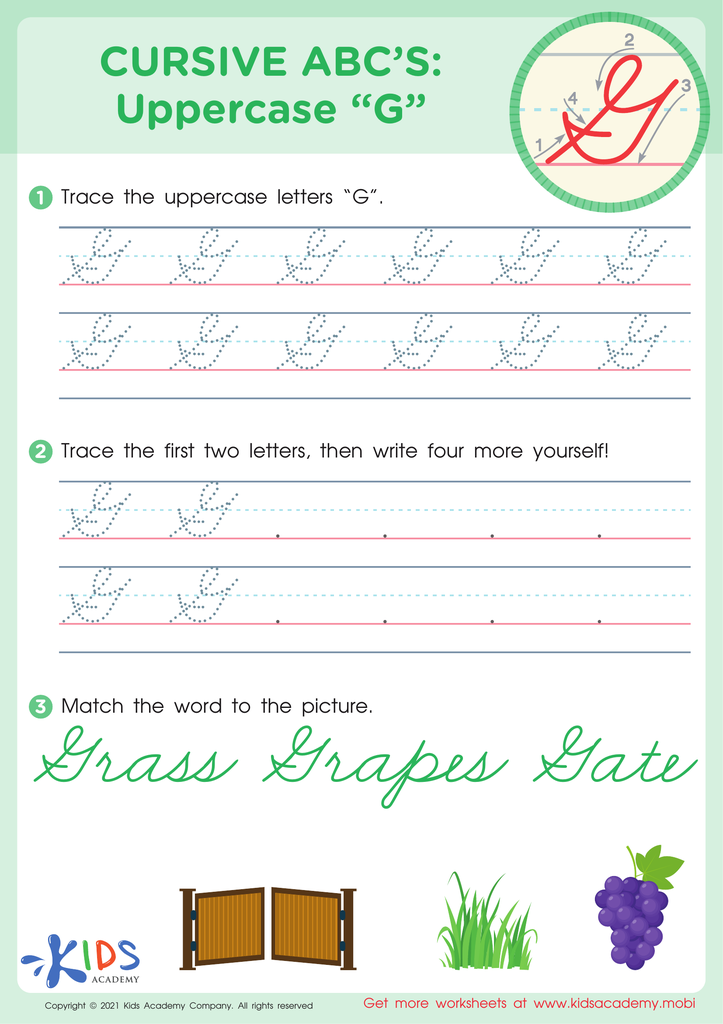

Cursive ABCs: Uppercase G
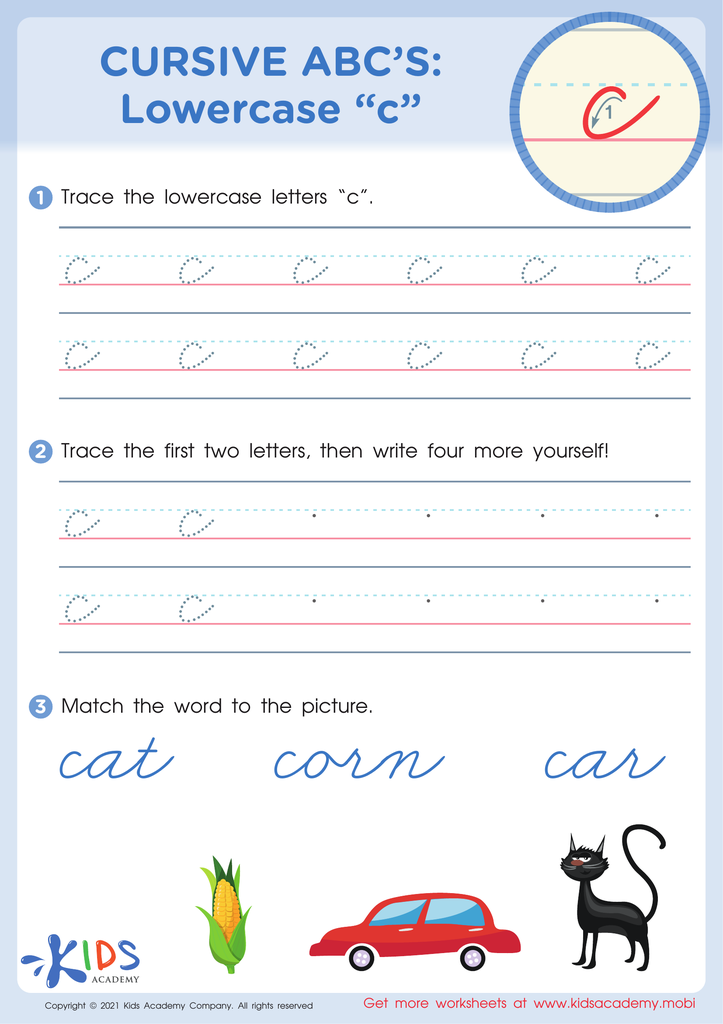

Cursive ABCs: Lowercase c
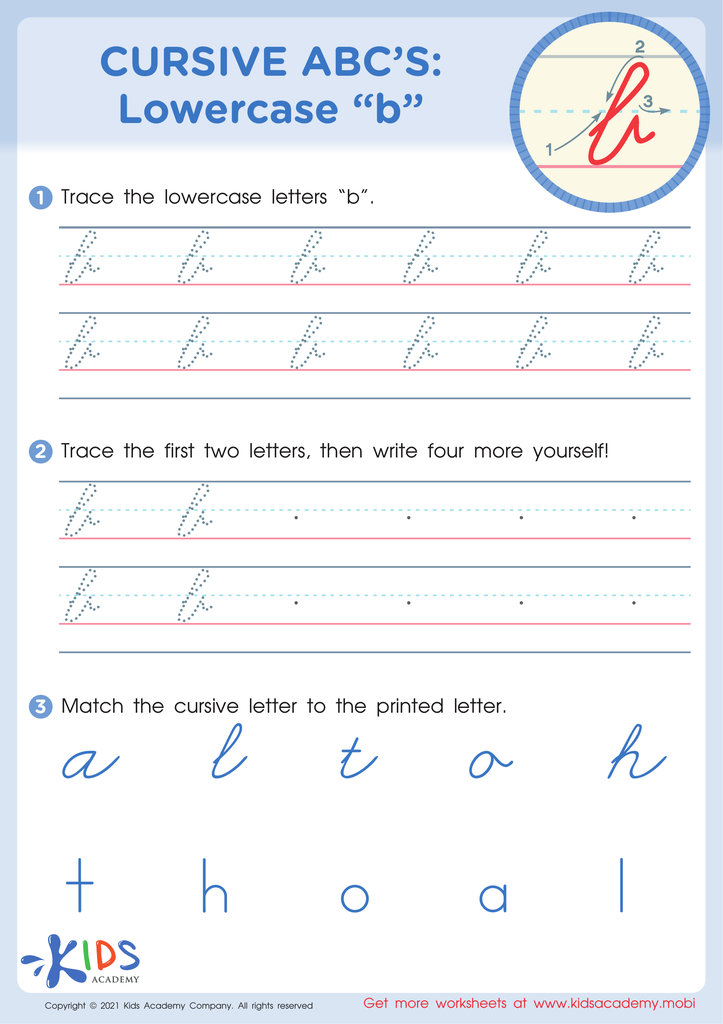

Cursive ABCs: Lowercase b


Cursive ABCs: Uppercase A
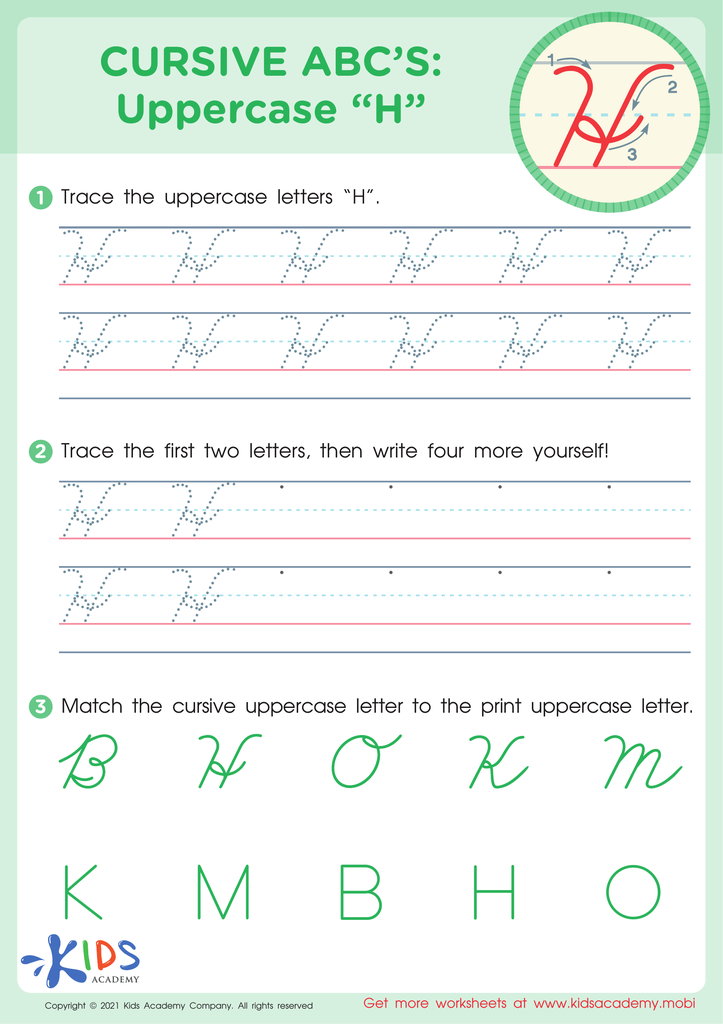

Cursive ABCs: Uppercase H
Alphabet recognition, particularly with cursive letters, holds significant importance for children between the ages of 4 and 9, a critical period for foundational literacy development. During these years, children's brains are exceptionally receptive to acquiring new skills. Learning to recognize cursive letters enriches their cognitive abilities, offering benefits beyond standard print alphabet recognition.
Cursive writing stimulates brain regions that are not usually active when typing or even printing letters. This practice enhances fine motor skills, coordination, and visual memory. Moreover, understanding cursive writing allows children to read a variety of handwritten forms of communication, like letters or historical documents, preserving essential cultural and historical literacy.
Parents and teachers should care about cursive alphabet recognition because it builds a solid foundation for future academic success. Familiarity with both print and cursive alphabets not only helps with content comprehension but also improves spelling and writing fluidity. Additionally, learning cursive writing fosters patience, attention to detail, and perseverance—traits valuable not just academically, but throughout life. Establishing these skills early can boost a child's confidence and set a positive tone for future educational endeavors. Therefore, prioritizing cursive alphabet recognition equips children with diverse, critical literacy tools and essential life skills.












